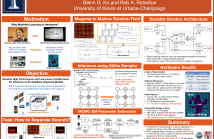
- Read more about ACCURACY EVALUATION BASED ON SIMULATION FOR FINITE PRECISION SYSTEMS USING INFERENTIAL STATISTICS
- Log in to post comments
The conversion of an algorithm to fixed-point arithmetic is commonly achieved with a large and fixed-number of simulations. Nevertheless, when simulating a fixed and ar- bitrary large number of samples, no confidence information is given on the characterization, and this method is often time-inefficient. To overcome this limitation, we propose a new method for noise evaluation. The error induced by fixed-point coding is statistically characterized to compute the noise power with an adaptive and reduced number of simulations.
poster.pdf
- Categories:
 19 Views
19 Views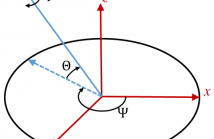
- Read more about The Direction Cosine Matrix Algorithm in Fixed-Point: Implementation and Analysis
- Log in to post comments
Inertial navigation allows tracking and updating the position and orientation of a moving object based on accelerometer and gyroscope data without external positioning aid, such as GPS. Therefore, inertial navigation is an essential technique for, e.g., indoor positioning. As inertial navigation is based on integration of acceleration vector components, computation errors accumulate and make the position and orientation estimate drift.
poster_mbc.pdf
- Categories:
 96 Views
96 Views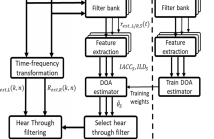
- Read more about PARAMETRIC HEAR THROUGH EQUALIZATION FOR AUGMENTED REALITY AUDIO
- Log in to post comments
Augmented Reality (AR) audio applications require headphones to be acoustically transparent so that real sounds can pass through unaltered for natural fusion with virtual sounds. In this paper, we consider a multiple source scenario for hear through (HT) equalization (EQ) using closed-back circumaural headsets. AR headset prototype (described in our previous study) is used to capture real sounds from external microphones and compute the directional HT filters using adaptive filtering.
- Categories:
 66 Views
66 Views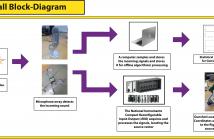
- Read more about Acoustic detection and localization of impulsive events in urban environments
- Log in to post comments
- Categories:
 20 Views
20 Views
- Read more about Micro hand gesture recognition system using ultrasonic active sensing method
- Log in to post comments
We define micro hand gesture recognition system as which uses micro dynamic hand gestures within a time interval for classification and recognition to achieve human-machine interaction. Our Project Hug (Hand-Ultrasonic-Gesture), with ultrasonic active sensing, pulsed radar signal processing, and time-sequence pattern recognition is presented in this paper for micro hand gesture recognition. We leverage one single channel to detect both range and velocity precisely, reducing the hardware complexity.
- Categories:
 76 Views
76 Views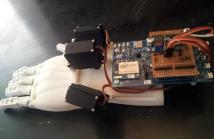
- Read more about Real Time Control of Hand Prosthesis Using EMG
- Log in to post comments
Current solutions for below the elbow amputees include affordable prosthesis allowing only a single movement or highly expensive prosthesis allowing several gestures. In this project, our goal was to design a system that provides an inexpensive, multi-functional solution for the hand prosthesis problem. We construct a real-time, portable system based on the Myo armband and a 3D printed prosthesis and show that this framework can provide a good and inexpensive solution for below the elbow amputees of all ages.
- Categories:
 95 Views
95 Views- Read more about Multicore Implementation of LDPC Decoders based on ADMM Algorithm
- Log in to post comments
Alternate direction method of multipliers (ADMM) technique has re- cently been proposed for LDPC decoding. Even though it improves the error rate performance compared with traditional message pass- ing (MP) techniques, it shows a higher computation complexity. In this article, the ADMM decoding algorithm is first described. Then, its computation complexity is analyzed. Finally, an optimized ver- sion which benefits from the multi-core processors architecture as well as the ADMM algorithm’s parallelism is presented.
- Categories:
 20 Views
20 Views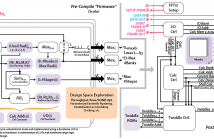
- Read more about A Generator of Memory-Based, Runtime-Reconfigurable 2n3m5k FFT Engines
- Log in to post comments
Runtime-reconfigurable, mixed-radix FFT/IFFT engines are essential for modern wireless communication systems. To comply with varying standards requirements, these engines are customized for each modem. The Chisel hardware construction language has been used in this work to create a generator of runtime-reconfigurable 2n3m5k(7l...) FFT engines targeting software-defined radios (SDR) for modern communications, but with flexibility to support a wide range of applications.
- Categories:
 45 Views
45 Views